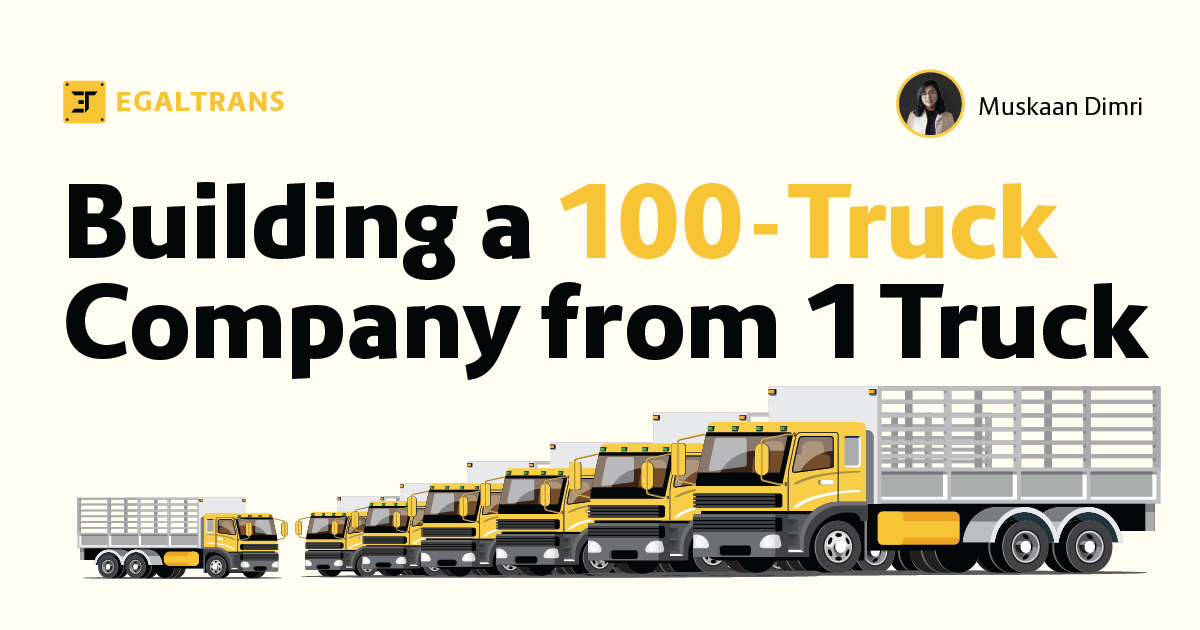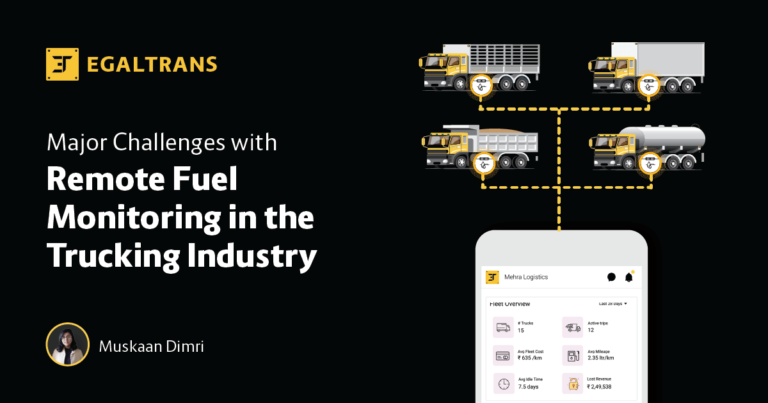Building a trucking empire from a single truck is a daunting yet rewarding journey. A 100-truck company is every fleet owner’s dream. It requires a blend of strategic planning, relentless execution, and adaptability to overcome the myriad challenges at each stage of growth. This article delves into the journey of truck fleet owners in two key stages – growing from 1 to 10 trucks and then from 10 to 100 trucks.
We will discuss the challenges faced in both stages and how to overcome them, the importance of strict operational guidelines and SOPs in maintaining fleet health, and provide real-life examples of successful entrepreneurs who started with just one truck.
Stage 1: Growing from 1 to 10 Trucks
Challenges Faced
- Capital Constraints: The initial phase of scaling from 1 to 10 trucks is fraught with financial challenges. Securing the capital needed to purchase additional trucks, hire drivers, and cover maintenance costs can be difficult, especially without a strong financial history.
- Operational Efficiency: With a small fleet, maintaining operational efficiency is critical. Scheduling, route optimization, and ensuring timely deliveries are crucial to retaining clients and securing new contracts.
- Driver Management: Hiring, training, and retaining skilled drivers becomes increasingly important as the fleet grows. Ensuring that drivers are aligned with the company’s values and standards is vital.
- Client Acquisition and Retention: Expanding the client base while maintaining relationships with existing clients can be challenging. Small fleet owners need to prove they can handle larger contracts to attract bigger clients.
Overcoming the Challenges
- Leverage Financial Support: Fleet owners can explore financing options such as bank loans, leasing, or partnerships to fund the acquisition of additional trucks. Building a solid relationship with financial institutions and maintaining good credit is essential.
- Streamline Operations: Implementing fleet management software can help in optimizing routes, tracking deliveries, and managing fuel consumption. This ensures that the fleet operates at maximum efficiency, reducing costs and improving service quality.
- Focus on Driver Relations: Offering competitive salaries, benefits, and a positive work environment can help attract and retain skilled drivers. Regular training programs and clear communication of expectations are also crucial.
- Expand Client Base: Networking, attending industry events, and leveraging online platforms can help in acquiring new clients. Providing excellent service to existing clients can lead to referrals and repeat business.
Stage 2: Scaling from 10 to 100 Trucks
Challenges Faced
- Increased Operational Complexity: As the fleet grows, managing operations becomes more complex. Scheduling, maintenance, and logistics require more sophisticated systems and processes.
- Regulatory Compliance: With a larger fleet, staying compliant with industry regulations becomes more challenging. This includes adhering to safety standards, environmental regulations, and employment laws.
- Maintaining Fleet Health: The larger the fleet, the more difficult it becomes to maintain the health of each truck. Regular maintenance, timely repairs, and managing wear and tear are crucial to avoid downtime and costly breakdowns.
- Leadership and Management: As the business grows, the need for strong leadership and effective management increases. Delegating responsibilities, building a capable team, and maintaining company culture are critical for sustained growth.
Overcoming the Challenges
- Implement Strict Operational Guidelines and SOPs: Developing and enforcing strict Standard Operating Procedures (SOPs) for every aspect of the business—from maintenance to driver conduct—helps maintain consistency and quality as the fleet grows.
- Invest in Technology: Advanced fleet management systems can automate many aspects of operations, from tracking vehicle performance to managing compliance. Investing in technology is crucial for managing a large fleet efficiently.
- Build a Strong Management Team: Hiring experienced managers and delegating responsibilities is essential for managing a large fleet. This allows the owner to focus on strategic decisions while ensuring day-to-day operations run smoothly.
- Focus on Preventive Maintenance: Implementing a preventive maintenance program helps in identifying potential issues before they lead to costly breakdowns. Regular inspections, timely repairs, and using quality parts are essential for maintaining fleet health.
Importance of Strict Operational Guidelines and SOPs
As the fleet grows, the complexity of operations increases exponentially. To maintain control and ensure consistency, it is crucial to develop and enforce strict operational guidelines and SOPs. These guidelines should cover every aspect of the business, including vehicle maintenance, driver conduct, safety protocols, and customer service standards.
- Consistency: SOPs ensure that every aspect of the business is conducted in a consistent manner, regardless of who is in charge. This consistency is crucial for maintaining quality and efficiency as the fleet grows.
- Compliance: Strict operational guidelines help in staying compliant with industry regulations, reducing the risk of fines and legal issues.
- Fleet Health: SOPs related to vehicle maintenance and driver conduct help in maintaining the health of the fleet, reducing downtime, and extending the lifespan of the trucks.
Successful Fleet Owners who Started with 1-truck and Built Companies Bigger than 100-truck Company
Many successful truck fleet owners started with just one truck and grew their businesses into large enterprises. Here are a few examples:
- VRL Logistics: VRL started with a single truck in 1976 and has grown into one of India’s largest logistics companies with a fleet of over 4,000 vehicles. The founder, Vijay Sankeshwar, focused on disciplined operations, customer satisfaction, and continuous expansion to achieve this growth.
- Gati Ltd.: Gati started with a single truck in 1989 and has grown into a leading logistics company in India. The founder, Mahendra Agarwal, emphasized innovation, technology adoption, and customer-centric services to scale the business.
- TCI (Transport Corporation of India): TCI started with a single truck in 1958 and has grown into a logistics giant with a fleet of over 12,000 trucks. The company’s success is attributed to its focus on innovation, technology, and expansion into new markets.
Also Read: Starting a Transport Commission Agency with Zero Investment
Key Takeaways for Building a 100-truck Company
– Stage 1: 1 to 10 Trucks: Focus on securing capital, streamlining operations, building a skilled driver base, and expanding the client base. Leverage technology to improve efficiency and manage growth.
– Stage 2: 10 to 100 Trucks: Address increased operational complexity, regulatory compliance, and fleet health. Invest in technology, build a strong management team, and implement preventive maintenance programs.
– Operational Guidelines and SOPs: Essential for maintaining consistency, ensuring compliance, and preserving fleet health. SOPs provide a framework for managing a large fleet effectively.
– Success Stories: Learning from successful fleet owners like VRL Logistics, Gati Ltd., and TCI can provide valuable insights into the strategies and practices that lead to growth.
Building a 100-truck company from a single truck is a challenging yet achievable goal. By focusing on strategic growth, leveraging technology, and maintaining strict operational guidelines, truck owners can successfully navigate the journey from 1 to 100 trucks.






